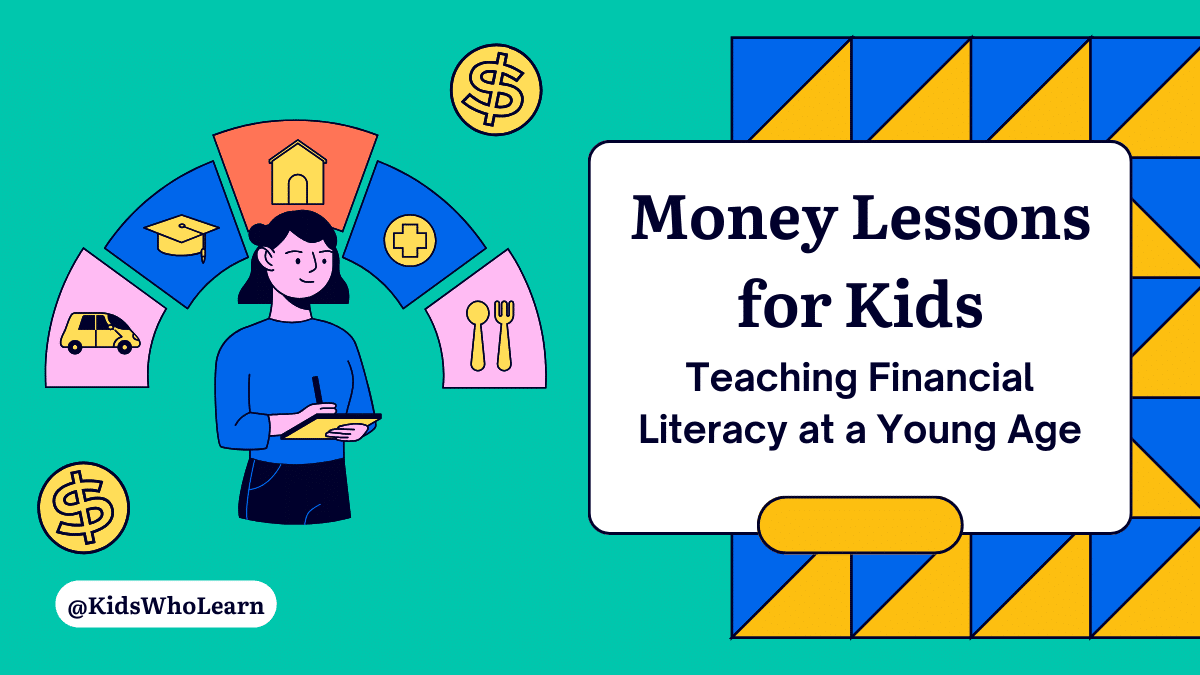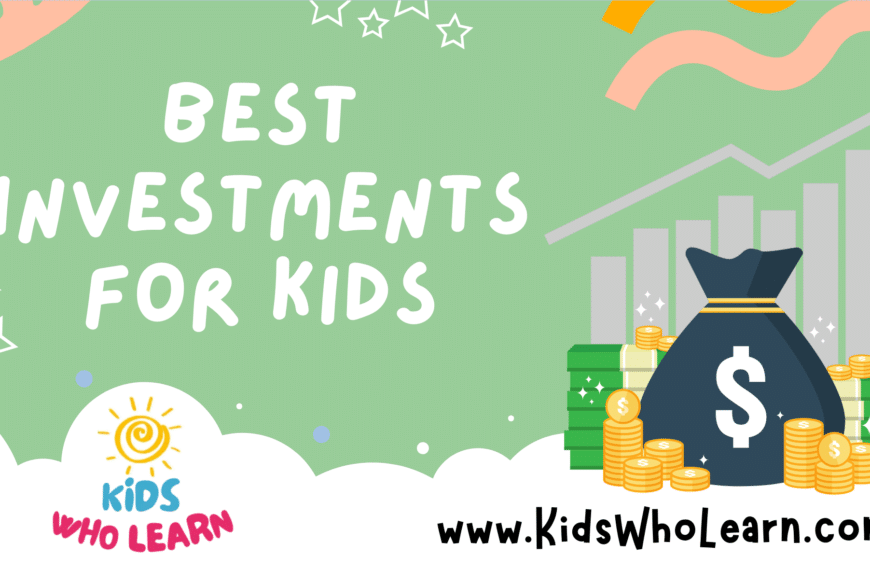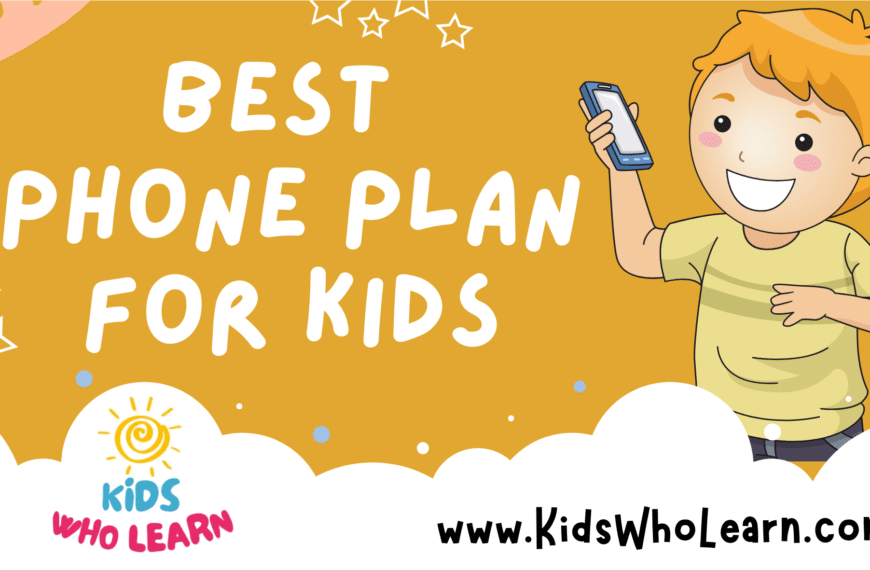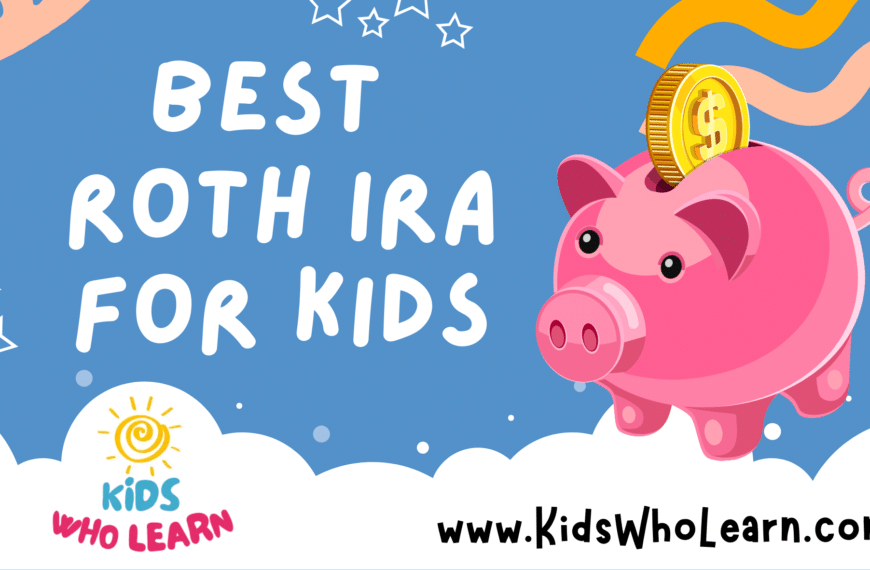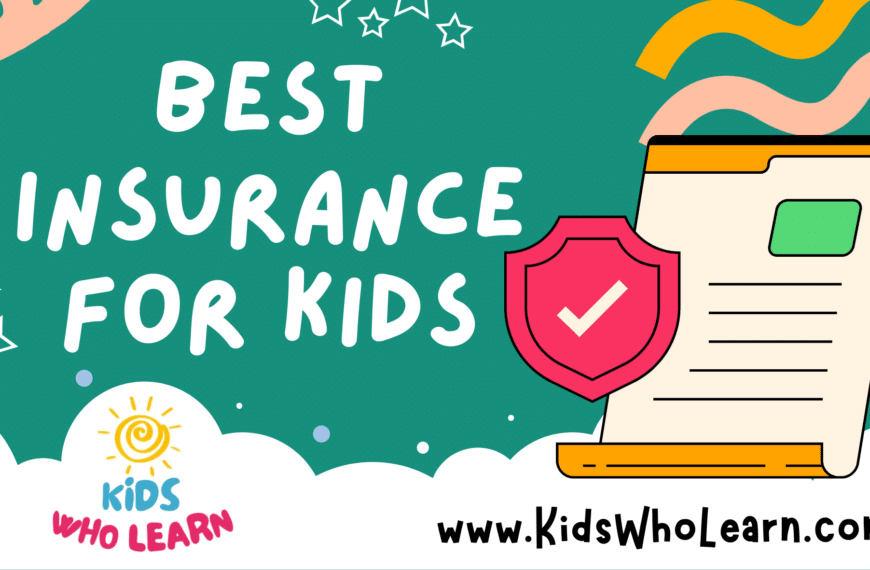Money management is a crucial life skill that everyone needs to learn, and it’s never too early to start. Teaching kids about money and finances from a young age can help them develop good habits and make smart financial decisions in the future. By instilling these lessons early on, kids can avoid common financial pitfalls and build a strong foundation for their financial future.
Understanding money is the first step in teaching kids about finances. It’s important to explain to them what money is, how it’s earned, and how it’s used. Once they have a basic understanding of money, you can move on to more advanced topics like budgeting, saving, and investing. Teaching kids about the importance of saving and budgeting can help them develop good financial habits and avoid overspending.
Earning money is another important lesson to teach kids. Whether it’s through chores, a part-time job, or an allowance, kids should learn the value of hard work and earning their own money. Charitable giving is also an important lesson to teach kids, as it can help them develop empathy and compassion for others. By teaching kids about money management from a young age, you can help set them up for a successful financial future.
Key Takeaways
- Understanding money is the first step in teaching kids about finances.
- Teaching kids about the importance of saving and budgeting can help them develop good financial habits.
- Earning money and charitable giving are important lessons to teach kids about money management.
Understanding Money
Money is an essential part of our lives, and it’s important to understand how it works. As a kid, you might think that money is just something that adults use to buy things, but it’s much more than that. Here are some important things to keep in mind when it comes to understanding money:
What is Money?
Money is a medium of exchange that people use to buy goods and services. It comes in different forms, such as coins, bills, and digital currency. The value of money is determined by the government, and it can change over time due to inflation or deflation.
How to Earn Money
As a kid, you might not have a job yet, but you can still earn money by doing chores around the house or helping your neighbors with tasks. It’s important to learn the value of hard work and the satisfaction that comes with earning your own money.
How to Save Money
Saving money is an important skill to learn, and it’s never too early to start. You can save money by setting aside a portion of your allowance or earnings each week. It’s also important to think about your goals and prioritize your spending accordingly.
How to Spend Money Wisely
When it comes to spending money, it’s important to make wise choices. Think about what you really need versus what you want, and try to make purchases that will give you the most value for your money. It’s also important to avoid impulse buying and to plan your purchases ahead of time.
Overall, understanding money is an important skill that will serve you well throughout your life. By learning the basics of earning, saving, and spending money wisely, you’ll be on your way to financial success.
Importance of Saving
Teaching your kids about saving money is one of the most important lessons you can give them. Learning how to save money at a young age helps them develop good financial habits that will last a lifetime. Here are two important sub-sections to consider when teaching your kids about saving money:
Setting Savings Goals
One of the best ways to teach your kids about saving money is to help them set goals. This could be saving up for a new toy, a trip to the amusement park, or even a college education. Setting goals gives kids a sense of purpose and motivation to save their money.
To help them set goals, encourage your kids to write down what they want to save for and how much money they need to save. This will help them stay focused and on track. You can also create a savings chart or use a savings app to track their progress towards their goal. Celebrate with them when they reach their goal to reinforce the importance of saving.
Delayed Gratification
Delayed gratification is the ability to resist the temptation of immediate rewards and wait for a bigger reward in the future. This is an important concept for kids to learn when it comes to saving money.
Teach your kids that saving money means delaying the gratification of buying something now in order to have more money to buy something better later. You can encourage delayed gratification by setting up a savings plan with rewards for meeting savings goals. For example, if your child saves a certain amount of money, you can reward them with a special treat or activity.
Overall, teaching your kids about the importance of saving money is an essential lesson that will benefit them for the rest of their lives. By setting savings goals and practicing delayed gratification, your kids will develop good financial habits that will help them achieve their dreams.
Budgeting Basics
Needs vs Wants
When it comes to budgeting, it’s important to understand the difference between needs and wants. Needs are things that are necessary for survival, such as food, shelter, and clothing. Wants, on the other hand, are things that are nice to have but not essential.
Teaching your kids to differentiate between needs and wants is a great way to help them prioritize their spending. Encourage them to make a list of their needs and wants, and then help them understand that they should focus on meeting their needs before spending money on their wants.
Creating a Simple Budget
Creating a budget can be overwhelming, but it doesn’t have to be. Start by helping your kids make a list of their income and expenses. Income can include things like allowance, gifts, and money earned from doing chores. Expenses can include things like snacks, toys, and other items they want to buy.
Once you have a list of income and expenses, help your kids prioritize their spending. Encourage them to allocate a certain amount of money for their needs, such as food and clothing, and then help them decide how much they can afford to spend on their wants.
It’s important to remind your kids that sticking to a budget can be challenging, but it’s worth it in the end. By learning to manage their money wisely, they’ll be better prepared for the future.
Earning Money
If you want to buy something that you really want, you can earn money to pay for it. There are a few ways you can earn money as a kid.
Chores for Allowance
One way to earn money is by doing chores around the house. Your parents might give you an allowance for doing chores like cleaning your room, washing dishes, or taking out the trash. You can use this money to save up for something you want.
Here are some chores you can do to earn money:
| Chore | Pay |
|---|---|
| Cleaning your room | $5 |
| Washing dishes | $2 |
| Taking out the trash | $1 |
Small Jobs for Neighbors
Another way to earn money is by doing small jobs for your neighbors. You can ask your neighbors if they need help with anything, like walking their dog or watering their plants. Make sure to ask your parents for permission and to stay safe.
Here are some small jobs you can do for your neighbors:
- Walking their dog
- Watering their plants
- Raking leaves
- Shoveling snow
You can negotiate a fair price with your neighbors for these jobs. Remember to do a good job so they will ask you to do more in the future.
Charitable Giving
Teaching your kids about charitable giving is an important money lesson that can help them become more generous and empathetic individuals. It can also help them develop a sense of responsibility towards their community and the world around them.
Importance of Giving
One of the most important lessons you can teach your kids about charitable giving is the importance of giving back to others. Explain to them that not everyone is as fortunate as they are, and that there are many people who are in need of help and support. Encourage your kids to think about the causes that they care about, and to consider donating their time, money, or resources to those causes.
You can also help your kids understand the impact of their donations by showing them how their contributions can make a difference. For example, you can use a table or chart to show them how much money they have donated and how many people or animals they have helped.
Another important lesson to teach your kids about charitable giving is that it’s not just about the money. Encourage your kids to get involved in volunteering or fundraising activities, and to find creative ways to support the causes they care about. This can include organizing a bake sale, participating in a charity walk or run, or even just spreading awareness about a cause on social media.
Overall, teaching your kids about charitable giving can help them become more compassionate, responsible, and caring individuals. By encouraging them to give back to their community and the world around them, you can help them develop a sense of purpose and meaning in their lives.
Smart Shopping
Teaching your kids how to shop smart is a valuable lesson that will benefit them for the rest of their lives. Here are some tips to help them make wise purchasing decisions.
Comparing Prices
One of the easiest ways to save money is by comparing prices. Teach your kids to shop around and look for the best deals before making a purchase. Encourage them to use their smartphones to check prices online and in-store.
Here are some tips for comparing prices:
- Look for sales and discounts.
- Check the clearance section for deals.
- Compare prices at different stores.
- Use coupons and promo codes.
Understanding Value
Teach your kids the difference between price and value. Just because something is cheap doesn’t mean it’s a good deal. Help them understand that value is a combination of quality, durability, and price.
Here are some tips for understanding value:
- Read product reviews before making a purchase.
- Look for products with warranties or guarantees.
- Consider the long-term cost of a purchase.
- Don’t be swayed by flashy advertising.
By teaching your kids how to shop smart, you’re setting them up for a lifetime of financial success.
Banking Basics
Teaching your kids about banking basics is an important step in their financial education. Here are some key concepts to cover:
Opening a Savings Account
Opening a savings account for your child is a great way to teach them about saving money. Many banks offer special accounts for kids, which often come with perks like higher interest rates and no fees.
To open a savings account for your child, you’ll typically need to provide some basic information, such as your child’s Social Security number and a form of identification. You may also need to make an initial deposit.
Once the account is open, encourage your child to make regular deposits and track their savings progress. This can help them develop good saving habits and learn the value of delayed gratification.
Understanding Interest
Interest is the amount of money that a bank pays you for keeping your money in an account. It’s important for kids to understand how interest works so they can make informed decisions about where to save their money.
When you deposit money into a savings account, the bank will pay you interest on that money over time. The amount of interest you earn is based on the interest rate and how long the money is in the account.
Teach your child to compare interest rates when choosing a savings account. A higher interest rate means more money earned over time. You can also show them how compound interest works, which is when interest is earned on both the principal (the original amount deposited) and the interest earned.
By understanding the basics of banking, your child can develop good financial habits that will serve them well throughout their lives.
Credit and Debit
Difference Between Credit and Debit
When it comes to money, two terms that you will often hear are credit and debit. While they may sound similar, they are actually quite different. Understanding the difference between credit and debit is an important money lesson for kids.
Debit is the amount of money that you have in your bank account. When you use your debit card to make a purchase, the money is taken directly from your account. This means that you can only spend the money that you have available in your account. It’s important to keep track of your account balance so that you don’t accidentally overspend.
Credit, on the other hand, is money that you borrow. When you use a credit card to make a purchase, you are borrowing money from the credit card company. You will need to pay back the money that you borrowed, plus interest. It’s important to use credit cards responsibly and only borrow what you can afford to pay back.
It’s also important to understand that credit and debit cards may have different fees associated with them. For example, some debit cards charge fees for using ATMs or overdrafting your account. Credit cards may have annual fees, late payment fees, or high interest rates. Make sure you understand the fees associated with each type of card before using them.
In summary, debit is the money you have in your account, while credit is money you borrow and need to pay back. Make sure you understand the fees associated with each type of card before using them, and use credit cards responsibly.
Investing for Beginners
Investing is a great way to grow your money over time. As a beginner, it’s important to understand the basics of investing.
Understanding Investments
When you invest, you’re putting your money into something with the hope of making a profit. There are many different types of investments, including stocks, bonds, and real estate.
Stocks
When you buy a stock, you’re buying a small piece of ownership in a company. If the company does well, the value of your stock will go up, and you can sell it for a profit. However, if the company does poorly, the value of your stock may go down.
Bonds
Bonds are loans that you make to a company or government. When you buy a bond, you’re essentially lending money to the issuer. In return, the issuer promises to pay you back with interest.
Real Estate
Investing in real estate involves buying property with the hope of making a profit. You can make money by renting out the property or selling it for more than you paid for it.
It’s important to remember that investing always comes with some level of risk. Before you invest, it’s a good idea to do your research and understand the potential risks and rewards.
Frequently Asked Questions
What are some fun ways to teach kids about money?
Teaching kids about money can be fun and engaging. One way to do this is by using games and activities that involve money. For example, you can play store with your kids and have them use play money to buy and sell items. You can also give them an allowance and encourage them to save and budget their money. Additionally, you can involve them in household budgeting and bill paying to give them a better understanding of how money works in the real world.
What are some good financial literacy games for kids?
There are many great financial literacy games for kids available online and in stores. Some popular options include Monopoly, The Game of Life, and Cashflow for Kids. These games can help kids learn about money management, budgeting, and investing in a fun and interactive way.
What are some popular children’s books about financial literacy?
There are many great children’s books available that teach financial literacy concepts in an engaging and age-appropriate way. Some popular options include “The Berenstain Bears’ Trouble with Money,” “A Smart Girl’s Guide: Money,” and “Alexander, Who Used to Be Rich Last Sunday.” These books can help kids learn about saving, budgeting, and making smart financial decisions.
How can parents teach their children financial responsibility?
Parents can teach their children financial responsibility by setting a good example and involving them in financial decision-making. This can include giving them an allowance, encouraging them to save and budget their money, and involving them in household budgeting and bill paying. Additionally, parents can teach their children about the value of money and the importance of making smart financial decisions.
What are some effective money management strategies for kids?
Effective money management strategies for kids include saving, budgeting, and investing. Kids can learn to save money by setting goals and putting aside a portion of their allowance or earnings each week. They can also learn to budget by keeping track of their expenses and making sure they don’t overspend. Finally, kids can learn about investing by researching stocks and mutual funds and making informed decisions about where to put their money.
How can schools incorporate financial literacy into their curriculum?
Schools can incorporate financial literacy into their curriculum by offering classes or workshops on financial management. This can include topics such as budgeting, saving, investing, and credit management. Additionally, schools can partner with local banks or financial institutions to provide resources and support for financial literacy education.

